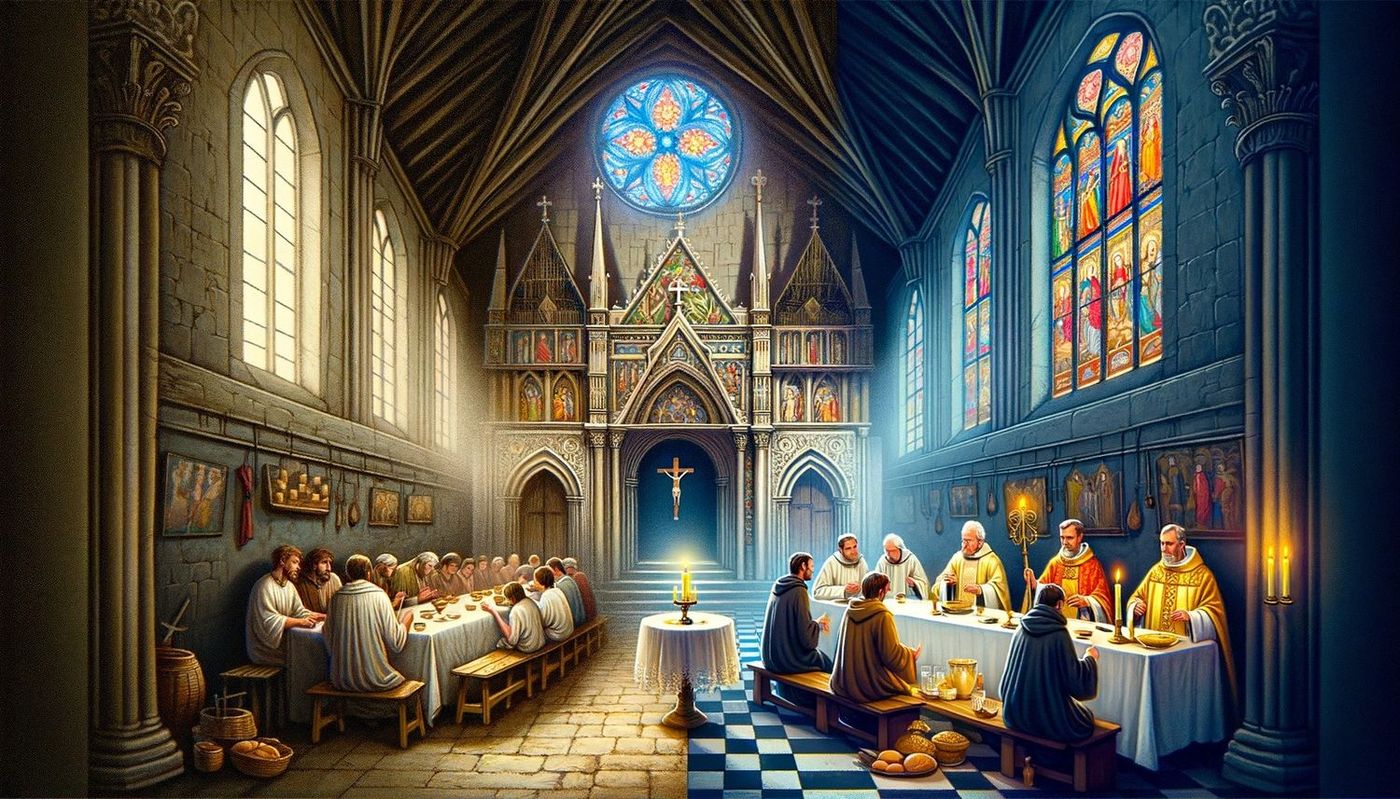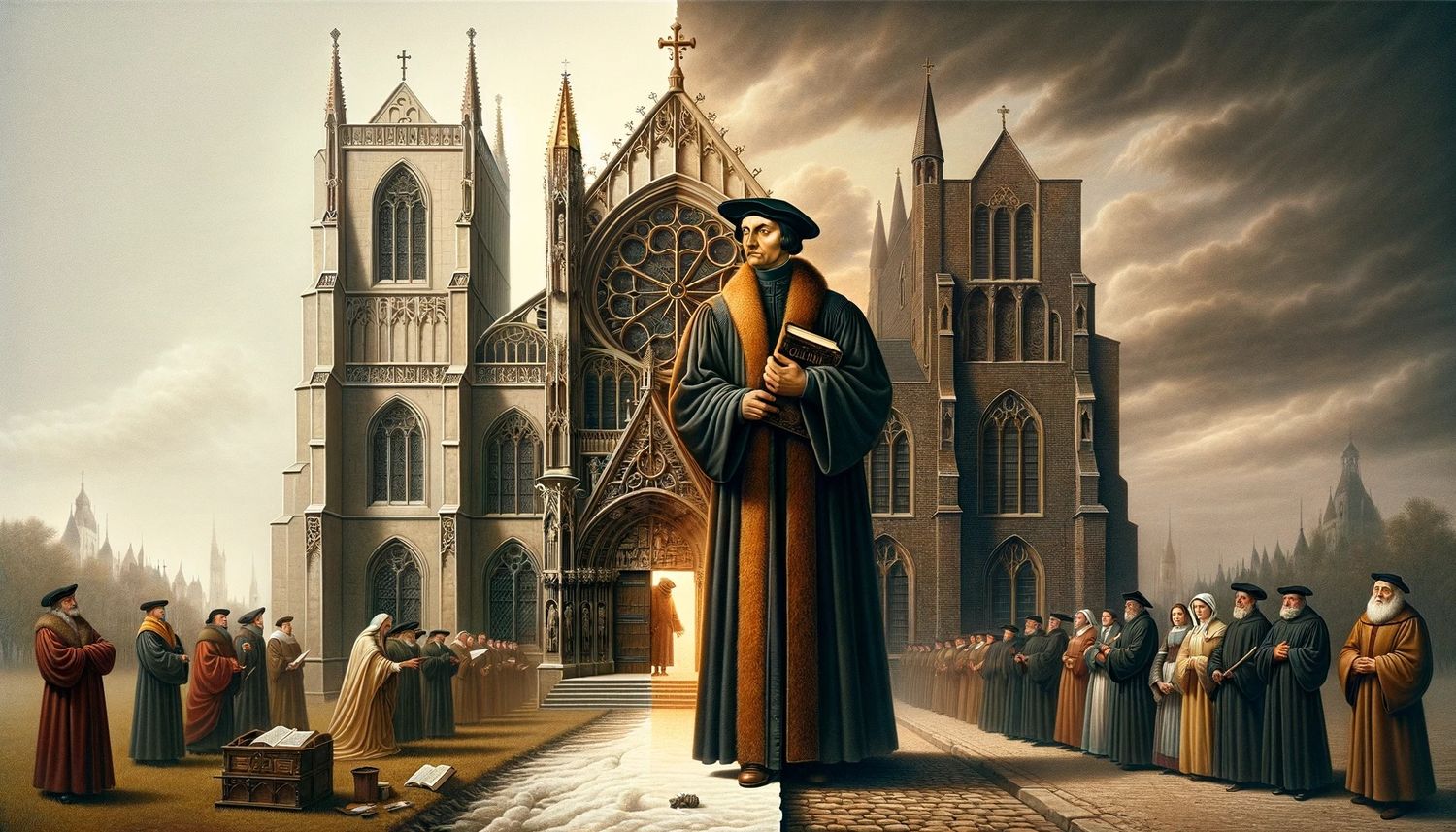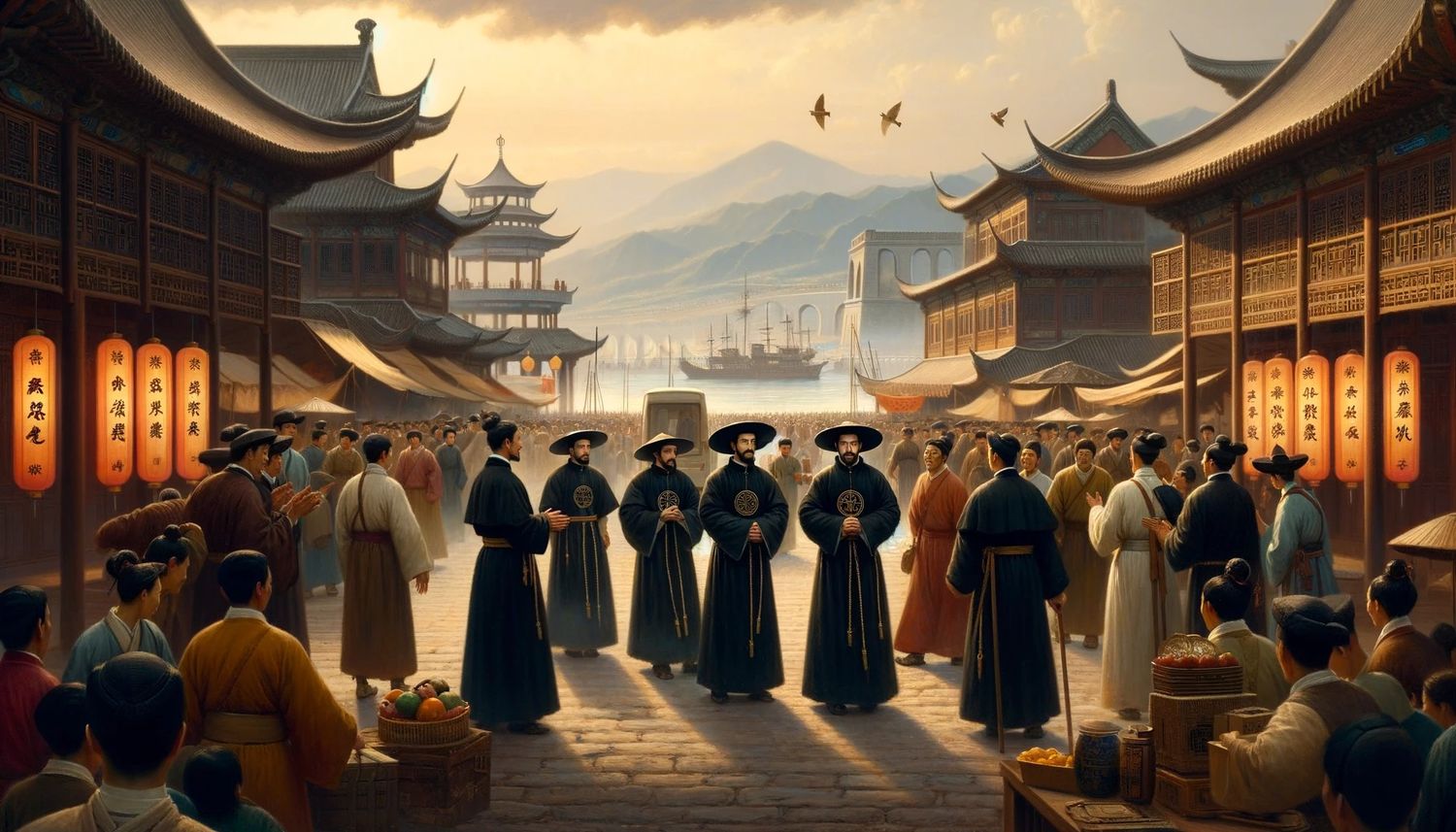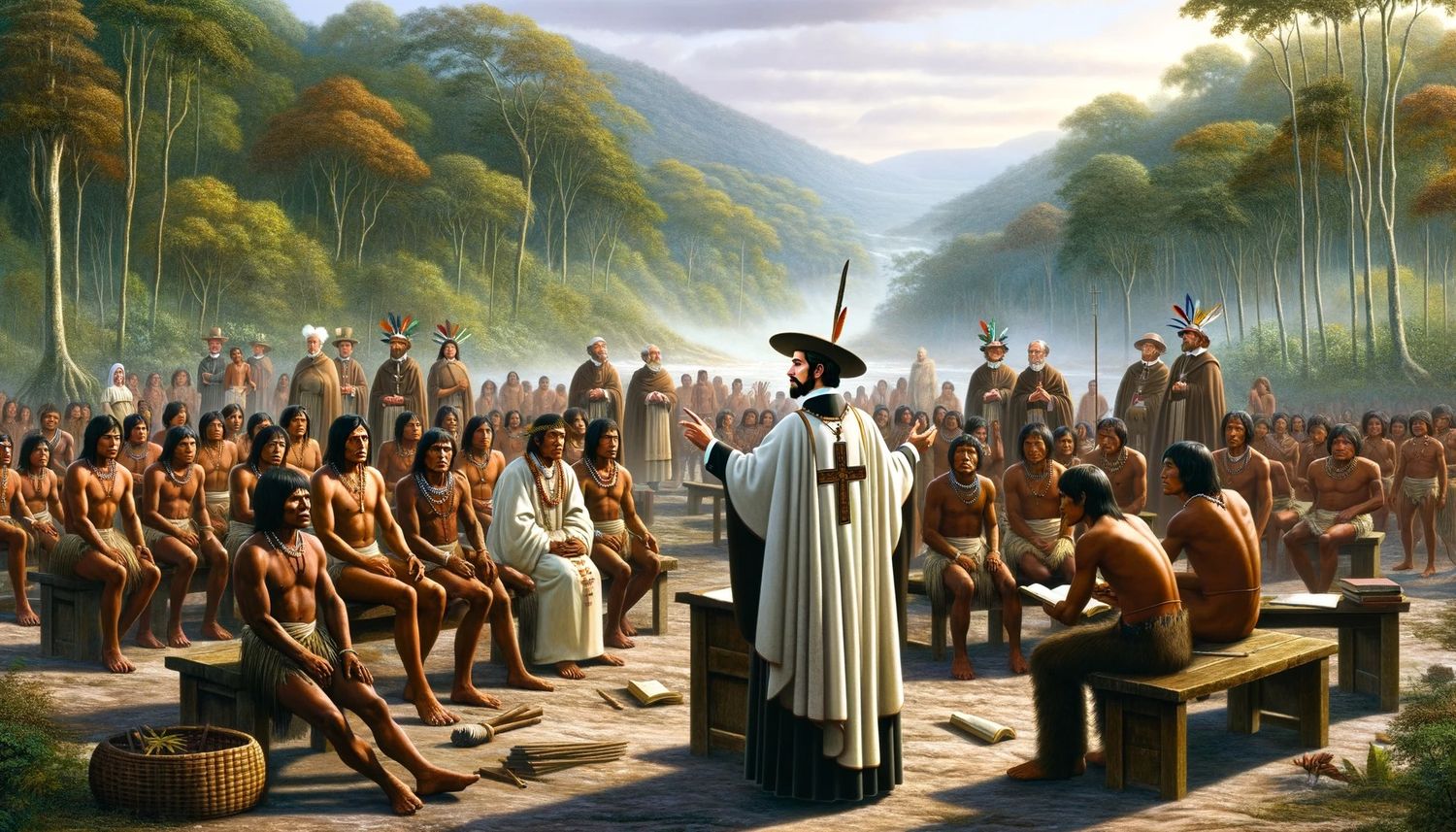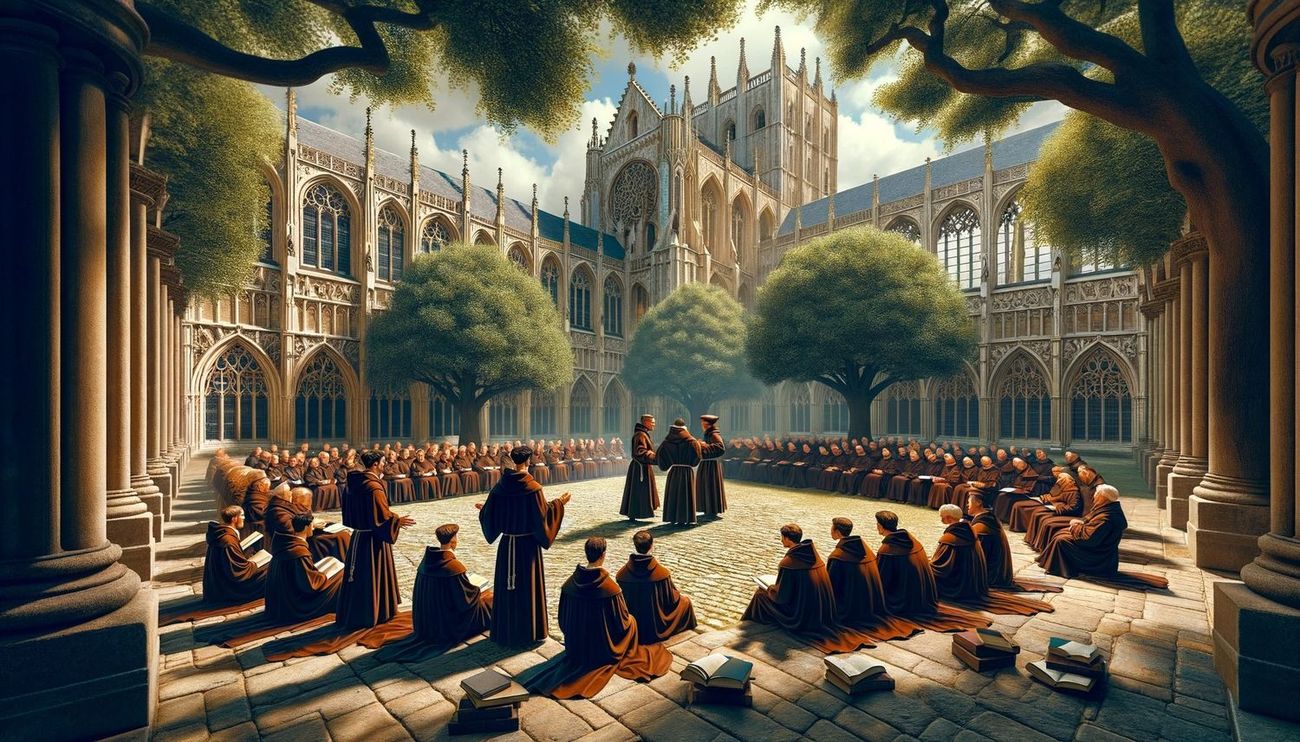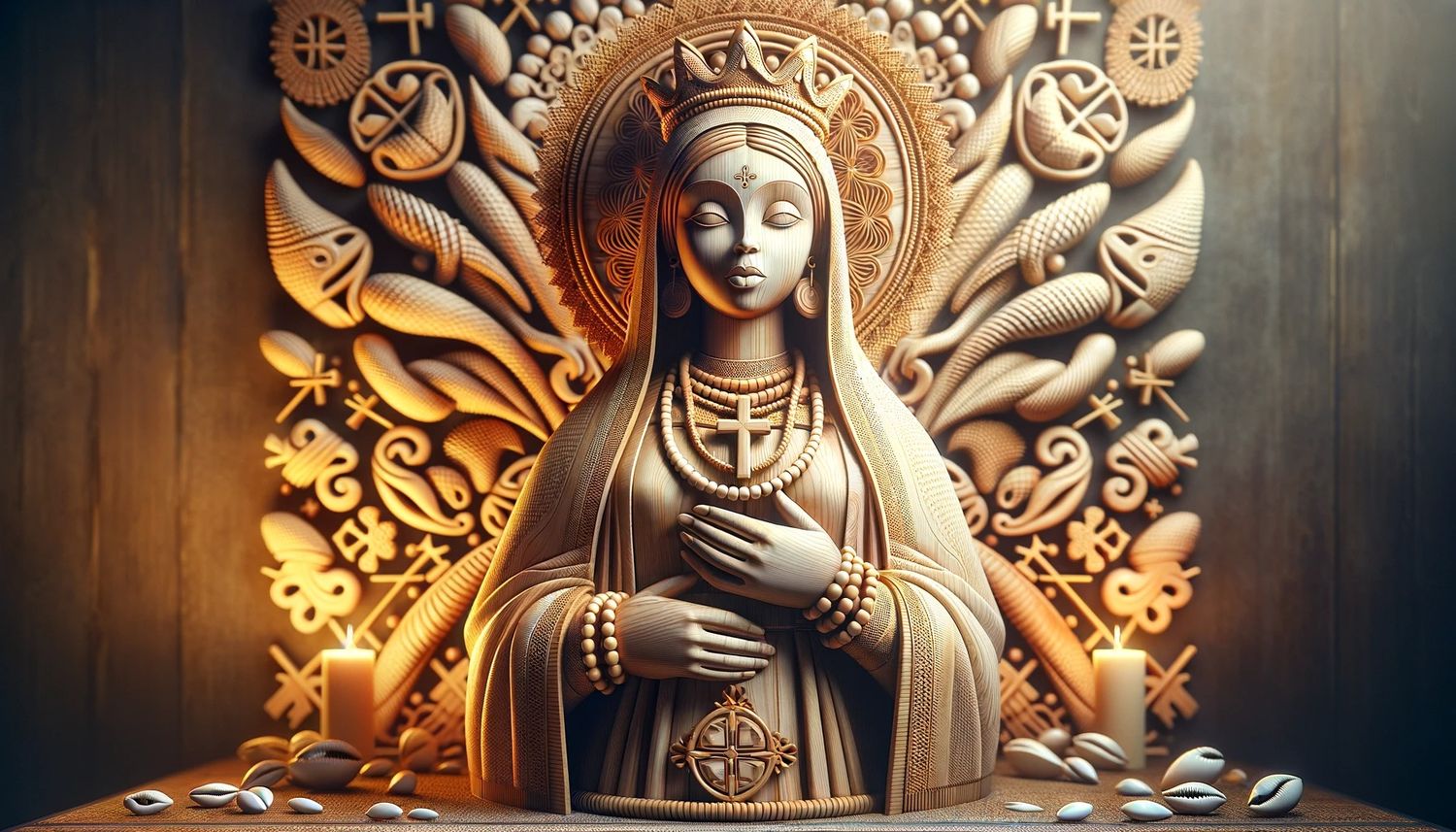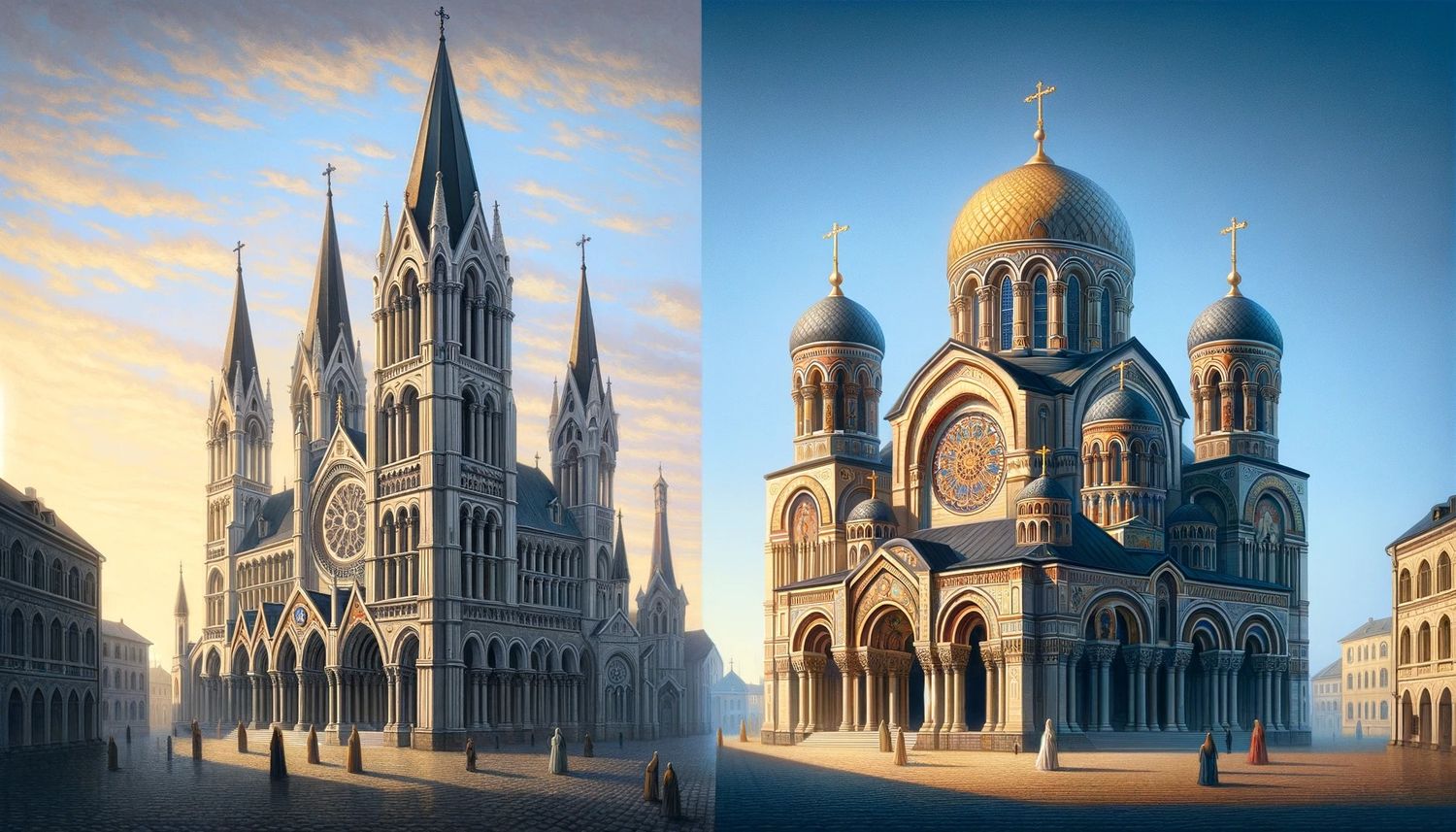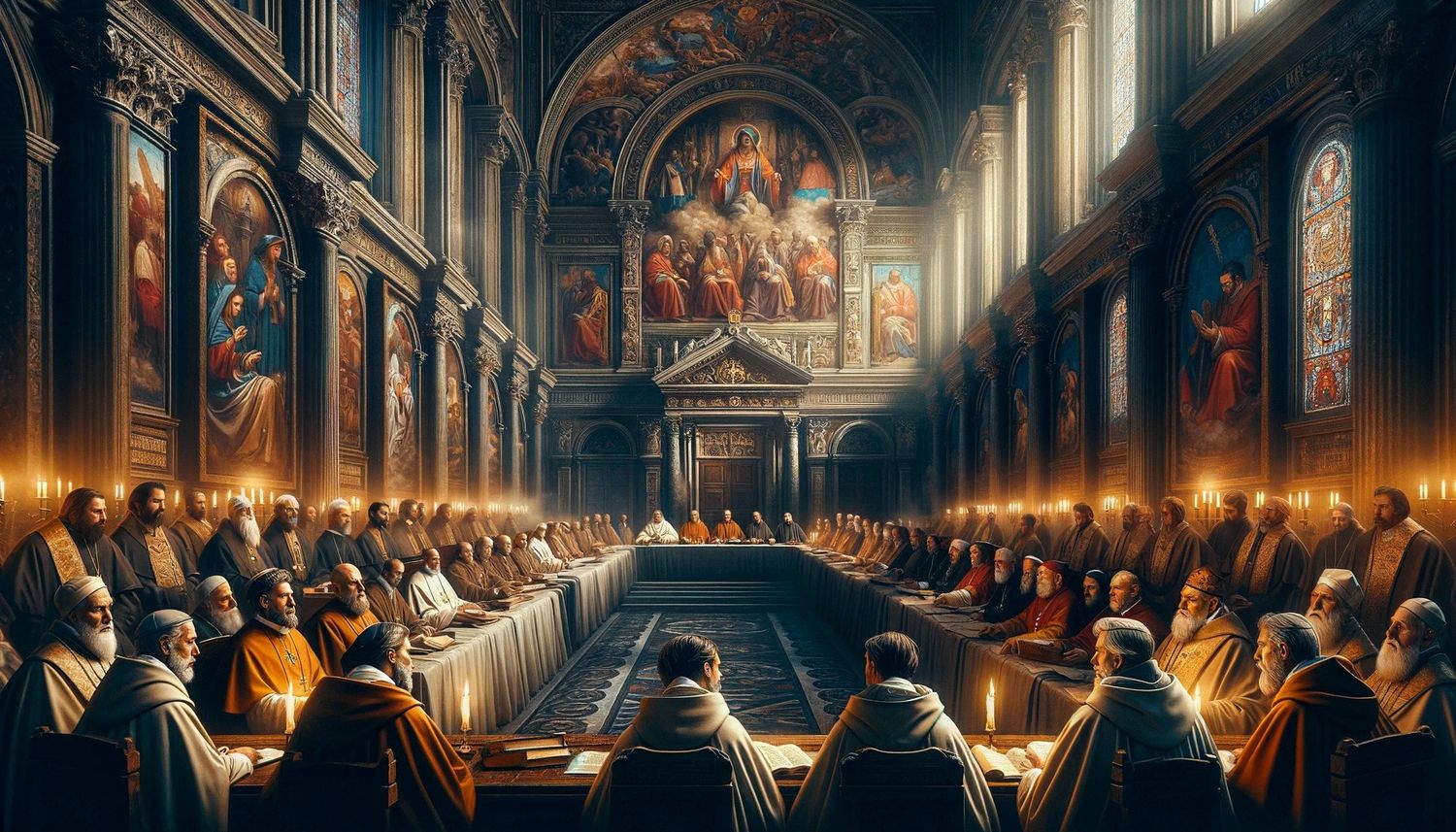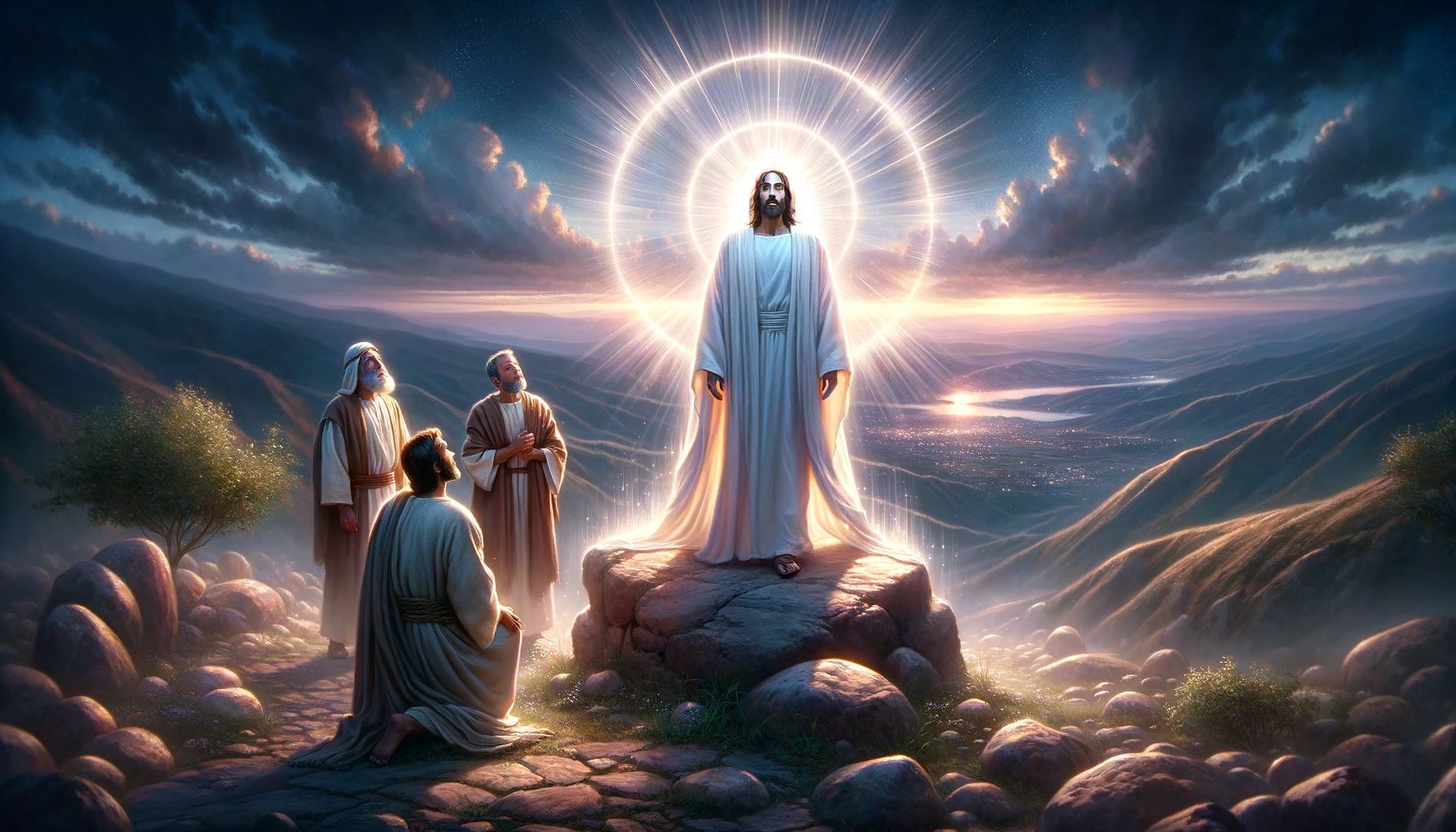Home>Theology and Spirituality>Which Colony Was The Center Of Catholicism?


Theology and Spirituality
Which Colony Was The Center Of Catholicism?
Published: February 18, 2024
Ericka Andersen, an editor at Christian.net, expertly merges digital strategy with content creation, focusing on faith and societal issues. Her communication skills enhance the platform's engaging narratives, fostering meaningful dialogue on belief's impact on society.
Discover the historical significance of the Catholic colony and its impact on theology and spirituality. Explore the center of Catholicism and its enduring legacy.
(Many of the links in this article redirect to a specific reviewed product. Your purchase of these products through affiliate links helps to generate commission for Christian.net, at no extra cost. Learn more)
Table of Contents
Introduction
The history of Catholicism in the New World is a captivating tale of exploration, conquest, and spiritual transformation. As European powers embarked on voyages of discovery, they carried with them not only ambitions of territorial expansion but also the fervent zeal to spread the Catholic faith to distant lands. This convergence of religious fervor and imperial ambition laid the foundation for the establishment of Catholicism in the Americas, shaping the cultural and spiritual landscape of the region for centuries to come.
The arrival of European explorers in the New World marked the beginning of a profound encounter between indigenous civilizations and the religious traditions of Europe. This encounter was characterized by a complex interplay of cultural exchange, religious syncretism, and, at times, conflict. The impact of Catholicism on the indigenous peoples of the Americas was profound, leading to the emergence of unique religious expressions that blended elements of Catholic doctrine with indigenous spiritual beliefs.
As we delve into the history of Catholicism in the New World, we will explore the pivotal role played by various European colonies in shaping the spread and influence of the Catholic faith. From the Spanish conquests in the Caribbean and Mesoamerica to the Portuguese presence in Brazil, and the French and English settlements in North America, each colonial power left an indelible mark on the religious landscape of the Americas. By examining the distinct approaches taken by these colonial powers in promoting and institutionalizing Catholicism, we gain a deeper understanding of the diverse cultural and religious tapestry that defines the New World.
Join me on a journey through the annals of history as we unravel the multifaceted story of Catholicism in the New World, tracing the footsteps of explorers, missionaries, and settlers who shaped the spiritual destiny of a continent. Through this exploration, we will gain insights into the enduring legacy of Catholicism in the Americas and the profound impact of this faith tradition on the lives of countless individuals across the centuries.
The Establishment of Catholicism in the New World
The establishment of Catholicism in the New World stands as a pivotal chapter in the annals of religious history. The arrival of European explorers in the Americas heralded a profound transformation in the spiritual landscape of the region. As the sails of Spanish, Portuguese, French, and English vessels billowed with the winds of exploration, they carried with them the sacred mission of spreading the Catholic faith to distant shores.
The early encounters between European explorers and the indigenous peoples of the Americas set the stage for the introduction of Catholicism to the New World. Missionaries, often accompanied by conquistadors and settlers, embarked on a dual quest of territorial expansion and spiritual conquest. Their efforts led to the establishment of missions, churches, and religious institutions that served as bastions of the Catholic faith in the New World.
The spread of Catholicism in the Americas was not without its complexities. The encounter between European Catholicism and the diverse indigenous cultures of the Americas gave rise to a rich tapestry of religious syncretism. Elements of indigenous spiritual beliefs intertwined with Catholic doctrine, giving rise to unique expressions of faith that reflected the fusion of diverse cultural traditions.
The establishment of Catholicism in the New World also bore witness to the resilience and tenacity of indigenous spiritual practices. Despite the fervent efforts of European missionaries, indigenous belief systems persisted, often coexisting alongside Catholicism in a delicate balance of cultural and spiritual exchange.
The establishment of Catholicism in the New World was not merely a one-sided imposition of religious doctrine. It was a dynamic process of encounter, dialogue, and adaptation, as the Catholic faith intersected with the spiritual legacies of indigenous civilizations. This intersection gave rise to a vibrant tapestry of religious expression that continues to shape the cultural and spiritual identity of the Americas to this day.
As we delve into the history of Catholicism in the New World, we are invited to contemplate the enduring legacy of this faith tradition and its profound impact on the spiritual and cultural heritage of the Americas. The establishment of Catholicism in the New World stands as a testament to the enduring power of faith to transcend boundaries, bridge cultures, and shape the destiny of nations.
The Role of Spanish Colonies in Spreading Catholicism
The Spanish colonies played a pivotal role in the propagation and institutionalization of Catholicism in the New World. The fervent zeal of Spanish explorers and missionaries, coupled with the patronage of the Spanish crown, set the stage for the widespread dissemination of the Catholic faith across the territories under Spanish control.
The Spanish conquest of the Caribbean and Mesoamerica marked the onset of a concerted effort to spread Catholicism in the Americas. Accompanying the expeditions of conquistadors such as Hernán Cortés and Francisco Pizarro were missionaries who saw themselves as spiritual conquerors, embarking on a mission to convert the indigenous populations to Catholicism. The establishment of missions and religious institutions, often in close proximity to Spanish settlements, served as focal points for the dissemination of Catholic doctrine and the conversion of indigenous peoples.
The Spanish crown, recognizing the strategic importance of religion in consolidating its hold on the newly acquired territories, actively supported the missionary endeavors in the New World. The patronage of the crown enabled the construction of grand cathedrals, monasteries, and churches, which served as enduring symbols of Spanish Catholic influence in the Americas. These religious edifices not only provided spaces for worship but also served as centers for the dissemination of Catholic teachings and the indoctrination of indigenous populations into the tenets of the faith.
The Spanish colonies also witnessed the emergence of religious orders such as the Franciscans, Dominicans, and Jesuits, whose members played a pivotal role in the spread of Catholicism. These orders established missions and schools, where they not only preached the Gospel but also sought to impart European languages, arts, and sciences to the indigenous populations. The fusion of religious instruction with education and cultural assimilation became a hallmark of the Spanish approach to spreading Catholicism in the New World.
The enduring legacy of Spanish colonial influence on Catholicism in the Americas is evident in the rich tapestry of religious traditions, art, and architecture that bear the indelible imprint of Spanish Catholic heritage. The syncretic blending of indigenous and Spanish religious practices gave rise to unique expressions of Catholicism that continue to shape the spiritual identity of the Americas.
The role of Spanish colonies in spreading Catholicism stands as a testament to the enduring impact of colonial endeavors on the religious and cultural landscape of the New World. The legacy of Spanish Catholicism in the Americas serves as a reminder of the complex interplay of faith, power, and cultural exchange that defined the early encounters between Europe and the indigenous civilizations of the Americas.
The Influence of the Portuguese Colony on Catholicism
The influence of the Portuguese colony on Catholicism in the New World left an indelible mark on the religious and cultural landscape of the Americas. As Portuguese explorers set sail to chart new maritime routes and establish colonial outposts, they carried with them the fervent zeal to spread the Catholic faith to distant shores. The Portuguese colonial enterprise, particularly in Brazil, played a pivotal role in shaping the dissemination and expression of Catholicism in the Americas.
The Portuguese arrival in Brazil marked the beginning of a profound encounter between European Catholicism and the indigenous cultures of the region. Unlike the Spanish conquests in the Caribbean and Mesoamerica, the Portuguese approach to spreading Catholicism in Brazil was characterized by a more gradual and decentralized process. Portuguese settlers, missionaries, and Jesuit priests established missions and settlements, seeking to integrate Catholicism into the fabric of indigenous societies while respecting their cultural traditions.
The Jesuit missions in Brazil, in particular, played a central role in the propagation of Catholicism and the conversion of indigenous populations. The Jesuits, known for their emphasis on education and cultural assimilation, sought to impart Catholic teachings while preserving elements of indigenous culture and spirituality. This approach led to the emergence of unique syncretic expressions of Catholicism that reflected the fusion of European religious practices with indigenous beliefs and customs.
The Portuguese colonial legacy also left a lasting imprint on the religious architecture and artistic traditions of Brazil. Magnificent churches, cathedrals, and religious artworks adorned with intricate carvings and vibrant colors became enduring symbols of Portuguese Catholic influence in Brazil. The blending of European Baroque aesthetics with indigenous artistic motifs gave rise to a distinctive visual language that reflected the fusion of diverse cultural influences.
The enduring legacy of Portuguese colonial influence on Catholicism in Brazil is evident in the rich tapestry of religious traditions and cultural expressions that continue to shape the spiritual identity of the country. The syncretic blending of Catholicism with indigenous beliefs and practices has given rise to vibrant religious festivals, rituals, and devotional expressions that reflect the complex interplay of cultural and spiritual influences.
The influence of the Portuguese colony on Catholicism stands as a testament to the enduring impact of colonial endeavors on the religious and cultural heritage of the Americas. The legacy of Portuguese Catholicism in Brazil serves as a reminder of the dynamic interplay between faith, culture, and tradition that continues to shape the spiritual identity of the nation.
The Impact of French and English Colonies on Catholicism
The impact of French and English colonies on Catholicism in the New World was characterized by a complex interplay of religious, cultural, and geopolitical dynamics. Unlike the Spanish and Portuguese colonies, the French and English colonial endeavors in North America unfolded within the context of competing imperial ambitions and religious traditions. The distinct approaches taken by these colonial powers in promoting and institutionalizing Catholicism left a lasting imprint on the religious and cultural landscape of the Americas.
In the French colonies, particularly in present-day Canada and the Mississippi Valley, Catholicism flourished under the patronage of the French crown. French missionaries, including members of religious orders such as the Jesuits and the Récollets, played a pivotal role in spreading Catholicism among the indigenous populations and establishing missions and religious institutions. The fusion of Catholicism with indigenous spiritual beliefs gave rise to unique expressions of faith, characterized by a syncretic blending of European religious practices with indigenous cultural traditions.
The French colonial legacy also left a profound impact on the religious and cultural heritage of Louisiana, where Catholicism became deeply entrenched. The establishment of New Orleans as a vibrant center of Catholic culture and spirituality reflected the enduring influence of French Catholic traditions in the region. The rich tapestry of religious festivals, devotional practices, and architectural landmarks bore witness to the enduring legacy of French Catholicism in the Americas.
In contrast, the impact of English colonies on Catholicism in North America was shaped by a different set of historical circumstances. The English Reformation and the establishment of the Church of England as the official religious institution posed challenges to the practice of Catholicism in the English colonies. Catholic settlers in Maryland, however, found a haven for religious freedom, leading to the establishment of a Catholic community that endured despite the prevailing religious tensions.
The enduring legacy of French and English colonial influence on Catholicism in the Americas is evident in the diverse religious traditions, cultural expressions, and architectural landmarks that continue to shape the spiritual identity of the region. The syncretic blending of Catholicism with indigenous beliefs and the enduring resilience of Catholic communities in the face of historical challenges stand as testaments to the enduring impact of colonial endeavors on the religious and cultural heritage of the Americas.
Conclusion
The multifaceted story of Catholicism in the New World is a testament to the enduring legacy of faith, cultural exchange, and the complex interplay of historical forces that shaped the spiritual destiny of the Americas. From the fervent zeal of Spanish and Portuguese explorers to the enduring resilience of indigenous spiritual traditions, the establishment of Catholicism in the New World stands as a pivotal chapter in the annals of religious history.
The Spanish colonies, with their fervent missionary zeal and patronage of the crown, played a pivotal role in spreading and institutionalizing Catholicism in the Americas. The enduring legacy of Spanish colonial influence on Catholicism is evident in the rich tapestry of religious traditions, art, and architecture that bear the indelible imprint of Spanish Catholic heritage.
The Portuguese colony, particularly in Brazil, left a lasting imprint on the religious and cultural landscape of the Americas. The syncretic blending of Catholicism with indigenous beliefs and practices gave rise to vibrant religious traditions and cultural expressions that continue to shape the spiritual identity of the nation.
The impact of French and English colonies on Catholicism in the New World reflected a complex interplay of religious, cultural, and geopolitical dynamics. The enduring legacy of French and English colonial influence on Catholicism is evident in the diverse religious traditions, cultural expressions, and architectural landmarks that continue to shape the spiritual identity of the region.
As we reflect on the establishment of Catholicism in the New World, we are invited to contemplate the enduring legacy of this faith tradition and its profound impact on the spiritual and cultural heritage of the Americas. The fusion of diverse cultural traditions, the resilience of indigenous spiritual practices, and the enduring influence of European colonial endeavors have given rise to a vibrant tapestry of religious expression that continues to shape the cultural and spiritual identity of the Americas.
The history of Catholicism in the New World serves as a poignant reminder of the enduring power of faith to transcend boundaries, bridge cultures, and shape the destiny of nations. It is a testament to the resilience of the human spirit and the enduring quest for spiritual meaning and connection in the tapestry of human experience.
